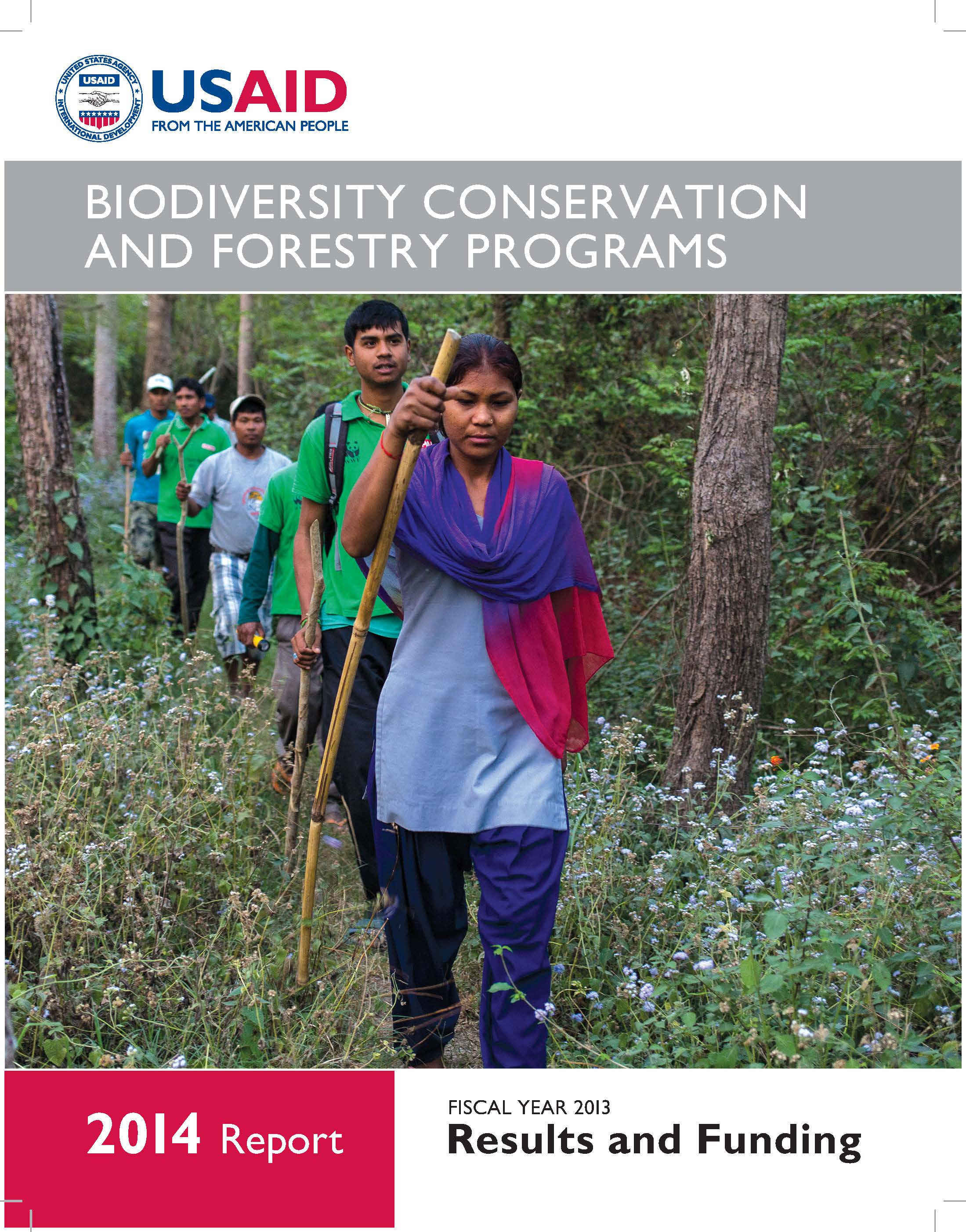USAID manages a diverse portfolio of projects that conserve biodiversity and sustain forests while advancing development, particularly for vulnerable people who rely on natural resources for their livelihoods. This annual report summarizes the Agency's work in this sector and its importance to human well-being, highlighting discrete and cumulative results in fiscal year (FY) 2013, and how FY 2013 funds were allocated for work in FY 2014.
USAID invested $180 million in FY 2013 funds toward biodiversity conservation in more than 50 countries. About half of this funding contributed to $142 million in sustainable forestry activities, for which climate change mitigation funding is the other major component. Agency programs had a substantial impact and reach in FY 2013, improving natural resource management across 235 million acres of biologically significant areas, larger than California, Oregon and Michigan combined. A selection of notable results followed by three in-depth profiles serve to illustrate major approaches used by USAID and its partners and the role of conservation in transformational development. Profiles are:








Comment
Make a general inquiry or suggest an improvement.